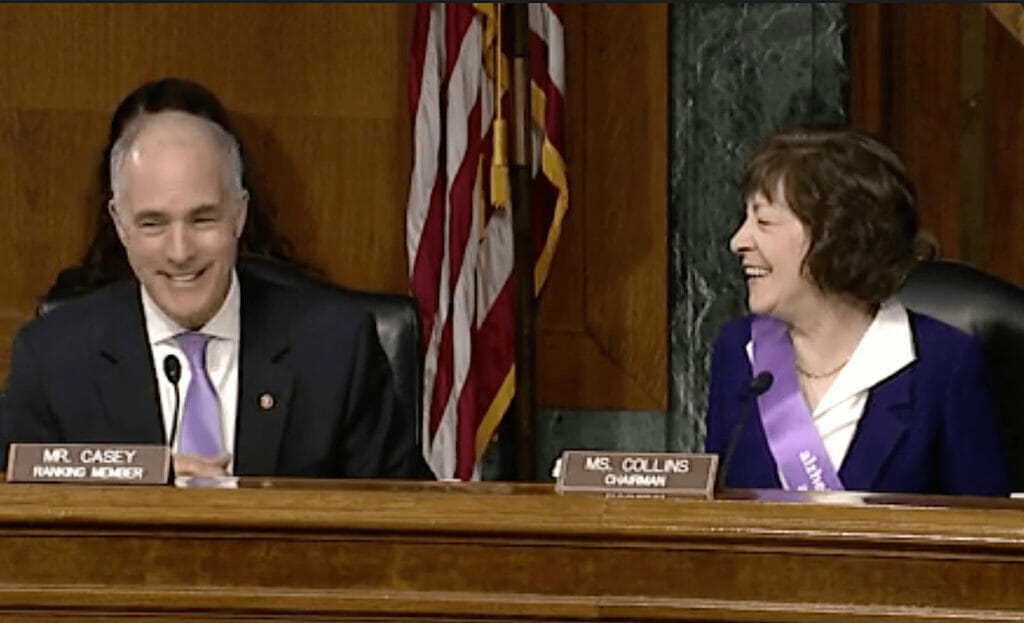
respectively, of the Senate Aging Committee, share a laugh during a recent committee hearing.
Sen. Susan Collins (R-ME) and Sen. Bob Casey (D-PA), chairman and ranking member, respectively, of the Senate Special Committee on Aging, are turning to assisted living providers and others for recommendations on ways to reduce older adults’ risk of falls and manage fall-related injuries.
The feedback will be included in a report with policy recommendations that the committee will prepare for Congress.
“Over the next several months, the Aging Committee will examine best practices in falls prevention as well as falls-related services across various settings, including but not limited to the home and community, assisted living facilities, nursing homes, and hospitals,” Collins and Casey wrote in a letter announcing the effort.
Comments will be accepted through June 26 at [email protected].
The annual total direct medical cost of falls-related injuries for older adults is approximately $50 billion, with 75% of these costs borne by the Medicare and Medicaid programs, the senators said. The committee specifically is seeking input on:
- Strategies to improve reporting to caregivers by those who fall as well as follow-up by healthcare professionals;
- Opportunities and limitations related to teaching tools, techniques and resources, including assistive technologies, to help empower older adults;
- Ways that Medicare coverage and reimbursement can be improved via welcome to Medicare and annual wellness visits, ways that Medicaid waivers can be used for falls prevention and fall-related services, and potential demonstration projects that the Centers for Medicare & Medicaid Services might consider;
- Evidence-based practices that reduce the rate of additional bone fractures among older adults who have fallen and broken bones in the past;
- Strategies to ensure that prescribers consider the effects of polypharmacy on falls risk, and whether there is a need for more research in this area;
- Ways, including government agency-supported assessments and protocols, that falls risk can be reduced during transitions of care; and
- Best practices for post-fracture care, and any federal policy impediments to their implementation.



